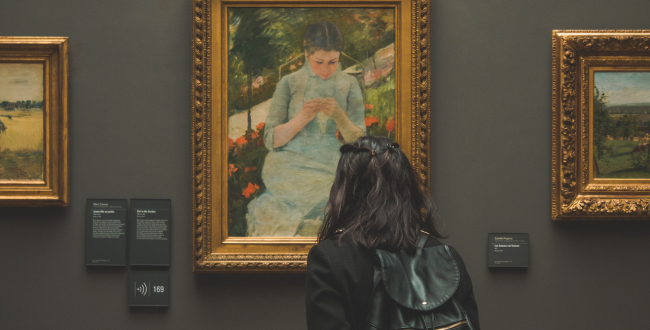Blog
Subscribe
Join over 5,000 people who receive the Anecdotally newsletter—and receive our free ebook Character Trumps Credentials.
Categories
- Anecdotes
- Business storytelling
- Collaboration
- Communication
- Corporate Storytelling
- Culture
- Decision-making
- Employee Engagement
- Events
- Fun
- Insight
- Leadership Posts
- News
- Podcast
- Selling
- Strategy
Archives
- March 2024
- December 2023
- November 2023
- October 2023
- September 2023
- August 2023
- July 2023
- June 2023
- May 2023
- April 2023
Years
183 – Show your work as much as possible – The Caillebotte Seven
Podcast: Play in new window | Download
Subscribe: Apple Podcasts | Spotify | RSS
We grow to love the things we are exposed to again and again. Listen to hear how the mere-exposure effect helped the Caillebotte Seven become the famous painters they are today.
This week, Shawn shares a story from the art world featuring Gustave Caillebotte and the Impressionist artists known as the Caillebotte Seven: Monet, Degas, Pissarro, Renoir, Sisley, Manet and Cezanne. It demonstrates the mere-exposure effect and how we grow comfortable with and love the things we are exposed to over and over again.
Shawn mentions an article, That’s Interesting! Towards a Phenomenology of Sociology and a Sociology of Phenomenology by Murray S. Davis, which you can find here.
For your story bank
Tags: ideas, persistence, skills, visibility
This story starts at 02:20
Gustave Caillebotte was a French painter in the 1800s. He didn’t have to work because he came from a wealthy family, but he did try being an engineer and a lawyer before deciding those careers weren’t for him. He soon realised he was quite a good painter.
Caillebotte submitted his first painting to the Academy of Fine Arts when he was 27. It was called The Floor Scrapers, and it depicted three men on a floor, trying to remove varnish.
The painting is now very famous, but the Academy rejected it. A lot of people hated it, but a few people, other artists, loved it.
Because Caillebotte had a lot of money, he bought his poor friends’ paintings to help them make money. But he would only buy their worst paintings, figuring someone would, someday, buy their best. So he built up a collection of Impressionist paintings, including Renoirs and Monets.
In his late 20s, Caillebotte had a premonition that he would die young. So he created a will and bequeathed his art collection to the Academy of Fine Arts.
He died at 45. Renoir was the executor of his estate and fought to have the Academy accept the paintings. Eventually, they took half of the collection, which included works by just seven painters. Those painters became known as the Caillebotte Seven: Monet, Degas, Pissarro, Renoir, Sisley, Manet and Cezanne.
The fight to get the Academy to accept the paintings drew a lot of attention. So when the Academy ran an exhibition, people flocked to it. Demand for the artists’ work grew, and they started to churn out paintings.
In 2016, a researcher at Cornell University, James Cutting, did an extensive literature review and counted all the instances where literature depicted Impressionist paintings. The Caillebotte Seven were featured more than 15,000 times. Cutting found it demonstrated a psychological effect called the mere-exposure effect: we grow comfortable with and love the things we are exposed to over and over again.
The artistry of Caillebotte’s paintings has now been recognised. They sit alongside those of the Caillebotte Seven in the Musée d’Orsay in Paris.
About Anecdote International
Anecdote International is a global training and consulting company, specialising in utilising storytelling to bring humanity back to the workforce. Anecdote is now unique in having a global network of over 60 partners in 28 countries, with their learning programs translated into 11 languages, and customers who incorporate these programs into their leadership and sales enablement activities.
